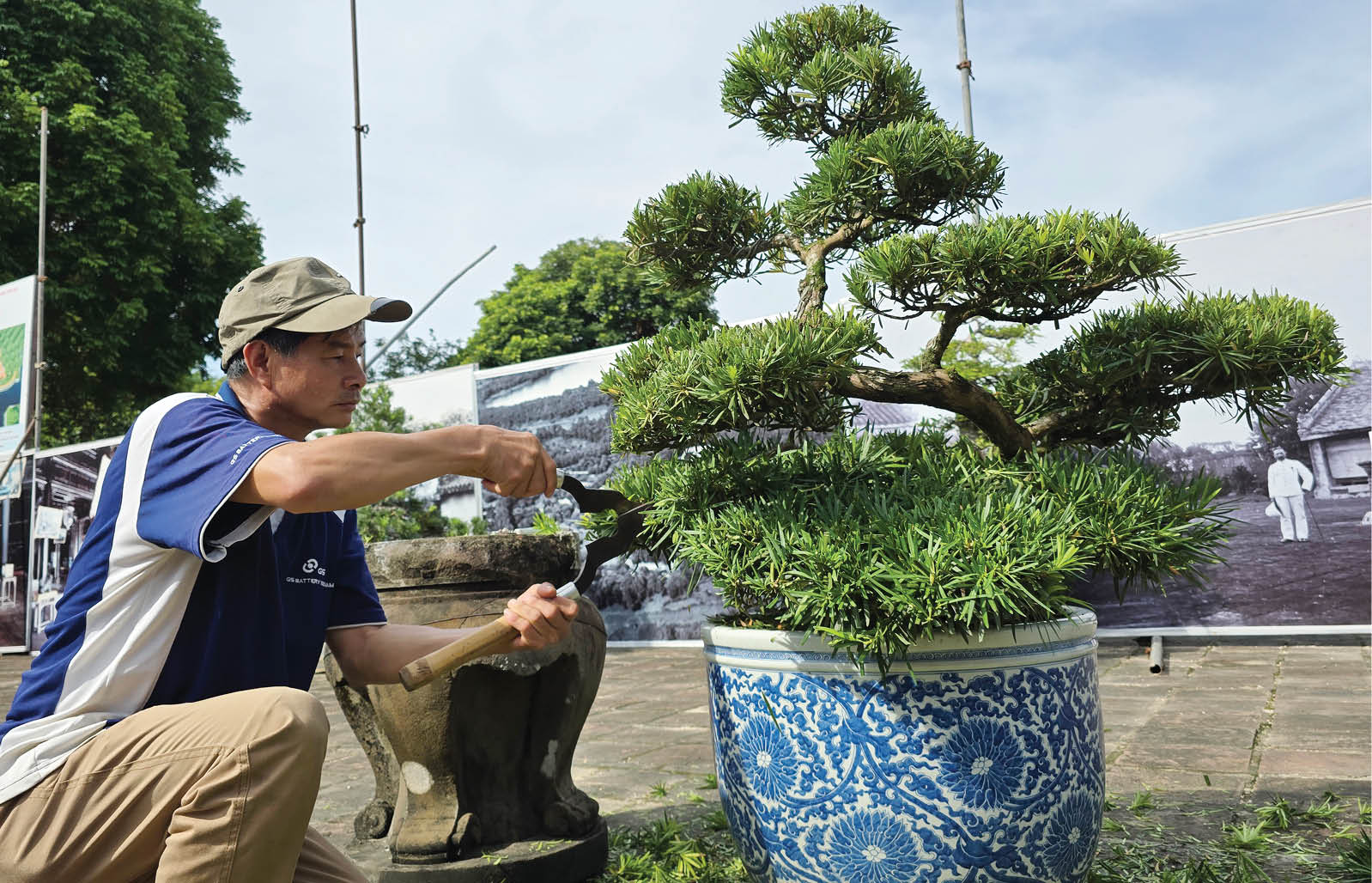 |
| Caring for and creating bonsai at relics |
Take care of every tree and blade of grass
In the hot sun of early July, on the road leading to Thieu Tri's mausoleum, Mr. Nguyen Van Tuan, Head of the Green Tree Team, Environmental Landscape Department - Hue Monuments Conservation Center and his colleagues took the opportunity to sit and rest under a tree after finishing pruning the tall, ancient trees.
“The trees are located in palaces, palaces, and mausoleums such as The Mieu, Trieu Mieu, Tu Duc, Khai Dinh… where vehicles cannot enter, so we have to climb them by hand, wear safety belts, and use saws to cut each branch. Then we gather all the branches, drag them, and carry them outside the premises before we can move them onto the vehicle. There were times when we were climbing and encountered a beehive or fire ant bites. It was very difficult and dangerous,” said Mr. Tuan.
Pruning old trees is not easy. It is a job that requires skill, strength and courage. Many trees have large canopies, tangled roots, and are located close to ancient structures. Pruning must ensure both aesthetics and not affect the structure. "Sometimes when climbing trees more than ten meters high, we just hang and do it," Tuan shared.
The Environmental Landscape Department currently has 88 people, divided into many teams: the garden team at the Imperial Citadel, the team taking care of the area outside the citadel, the green tree team specializing in pruning at relic sites, the team in charge of the nursery, breeding and preserving precious plants... Their work starts from early morning to late afternoon, regardless of rain or shine.
Mr. Le Trung Hieu, Head of the Environmental Landscape Department, said that the unit is managing more than 80,000 trees; of which, nearly 8,000 ancient trees are attached with location codes to monitor their growth status. Each tree in the heritage site is not only a plant, but also a part of history. Some trees are associated with the Nguyen Dynasty kings, some have witnessed many changes in this land.
In the summer, when the sun is hot and the Lao wind blows continuously, environmental workers have to increase watering to keep the grass moist, take care of the lawn in Ngo Mon Square, trim ornamental plants in Co Ha Garden, Thieu Phuong Garden or the Royal Antiquities Museum yard... "Every day we water the entire square, starting from 5:30 am to before 7 pm, then continue in the afternoon at other locations", said Ms. Tran Thi Bich Thuan, an employee of Garden Team No. 2. Many days are 40 degrees hot, people are drenched in sweat, but the trees cannot be left to dry, the flowers cannot be left to wither.
For Nguyen Van Tuan, to do this job, one must love trees and the ancient space of Hue in order to stick with it for a long time. "Every morning when I go to the relic sites and see flowers blooming, grass green, trees growing well, visitors passing by taking pictures and complimenting the beauty, I feel happy and motivated," Tuan happily said.
Green space - Cultural space
Tree care is not just about watering, pruning or pest control. The Environmental Landscape Department is also responsible for beautifying the entire landscape on important occasions. Before each Hue Festival or major holiday, all human resources are mobilized to renew the landscape, ensuring a green, clean space, true to the spirit of the ancient royal court.
Mr. Hieu said that during the two months before the exhibition of ornamental plants and orchids from three regions in May, the entire team focused on beautifying the grounds of the Interior Palace; renovating and rearranging the entire system of ornamental plants and flowers. "In the near future, the Quoc Tu Giam area will also be landscaped to create a new highlight for visitors," Mr. Hieu informed.
Many tourists to Hue are impressed by the cool green of the Imperial City. Mr. Nguyen Van Tu, a tourist from Hanoi, shared: “Walking among the ancient trees in the early morning, I feel like I am lost in another space, very quiet and full of depth. The beautiful landscape makes the experience of Hue much more poetic.”
According to Mr. Le Trung Hieu, to promote the value of relics, landscape plays an inseparable role with architecture. Trees in Hue are not simply decorative, they also have the role of shading, regulating the climate, protecting the structure of the building and more importantly, conveying historical and cultural emotions to visitors. Many trees in Hue relics are hundreds of years old, historical witnesses, from lychee and longan trees that were planted to pay tribute to the king to the fragrant frangipani trees in the temple yard. Taking care of these trees is not only maintenance but also preserving the soul of the ancient capital.
On hot sunny days, among the stream of people strolling under the green canopy of the Imperial City, few people can imagine that behind the coolness is an elaborate, persistent and dedicated care system. It is that cool green that is daily supporting the heritage, preserving the old ways, preserving the identity of the Ancient Capital through the centuries.
Source: https://huengaynay.vn/van-hoa-nghe-thuat/giu-mau-xanh-cho-di-san-155942.html






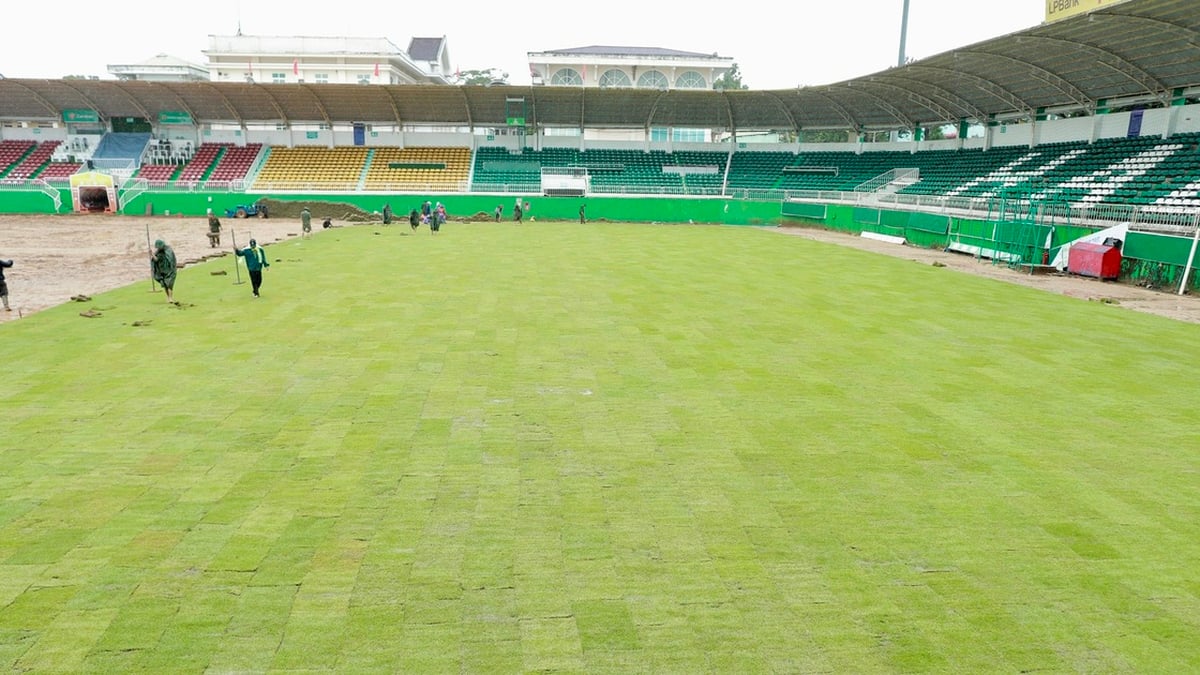















![[Photo] Signing of cooperation between ministries, branches and localities of Vietnam and Senegal](https://vphoto.vietnam.vn/thumb/1200x675/vietnam/resource/IMAGE/2025/7/24/6147c654b0ae4f2793188e982e272651)
![[Infographic] Vietnam-Senegal traditional friendship](https://vphoto.vietnam.vn/thumb/1200x675/vietnam/resource/IMAGE/2025/7/23/4c96a604979345adb452af1d439d457b)








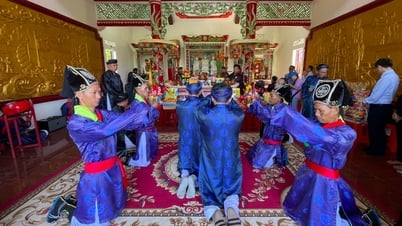

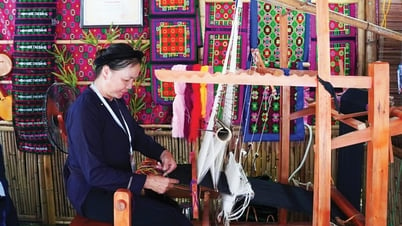

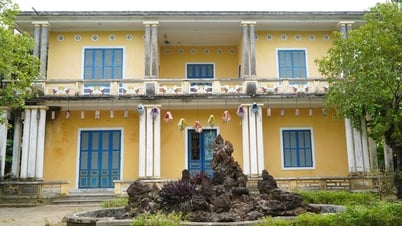

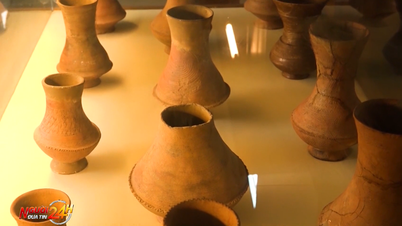


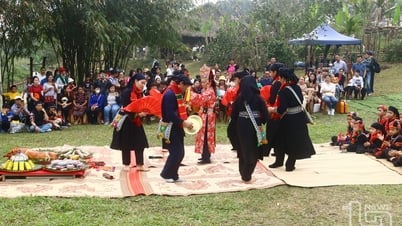




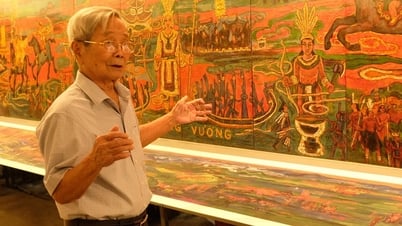

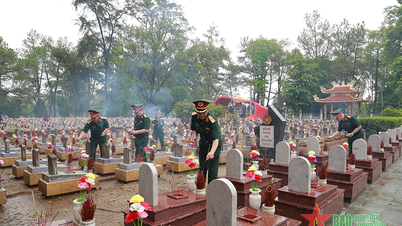


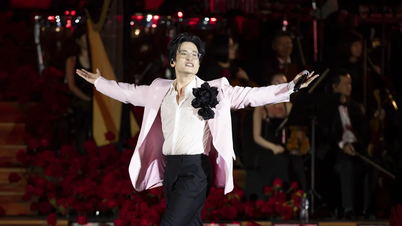








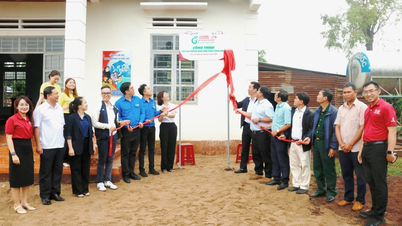



























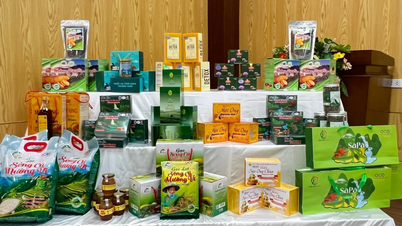



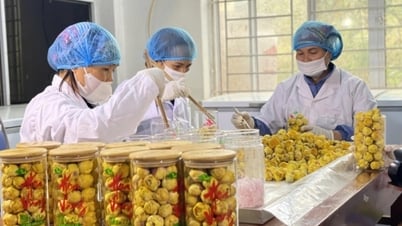

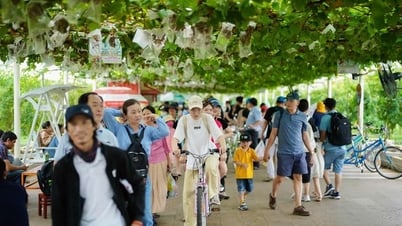



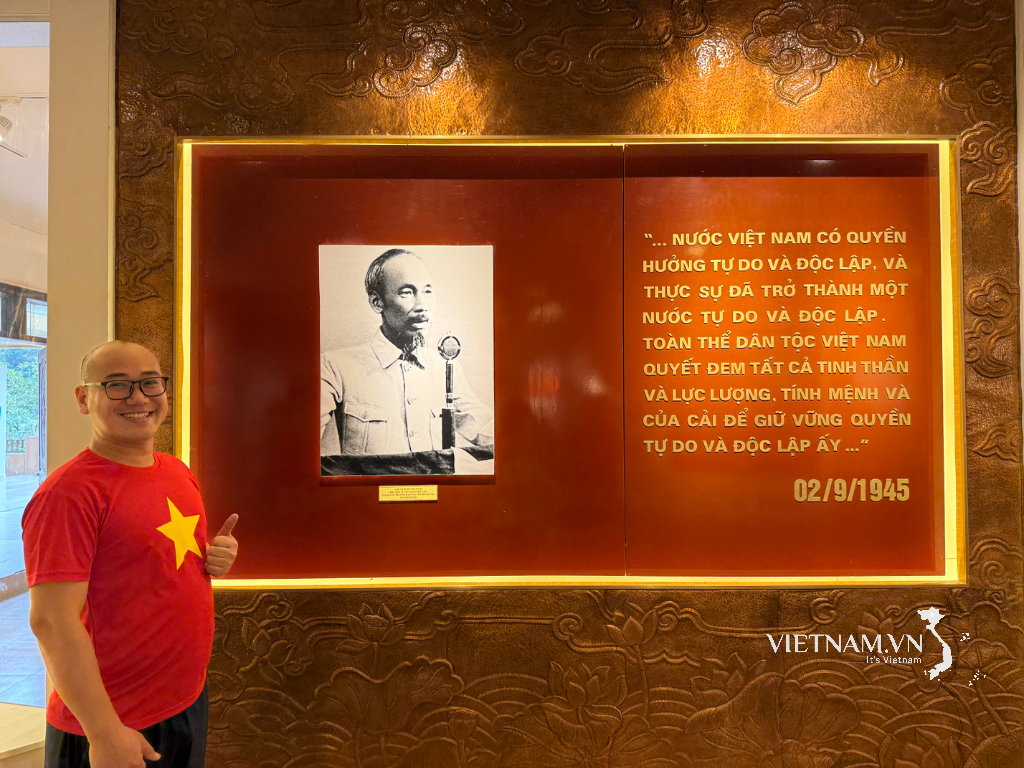


Comment (0)